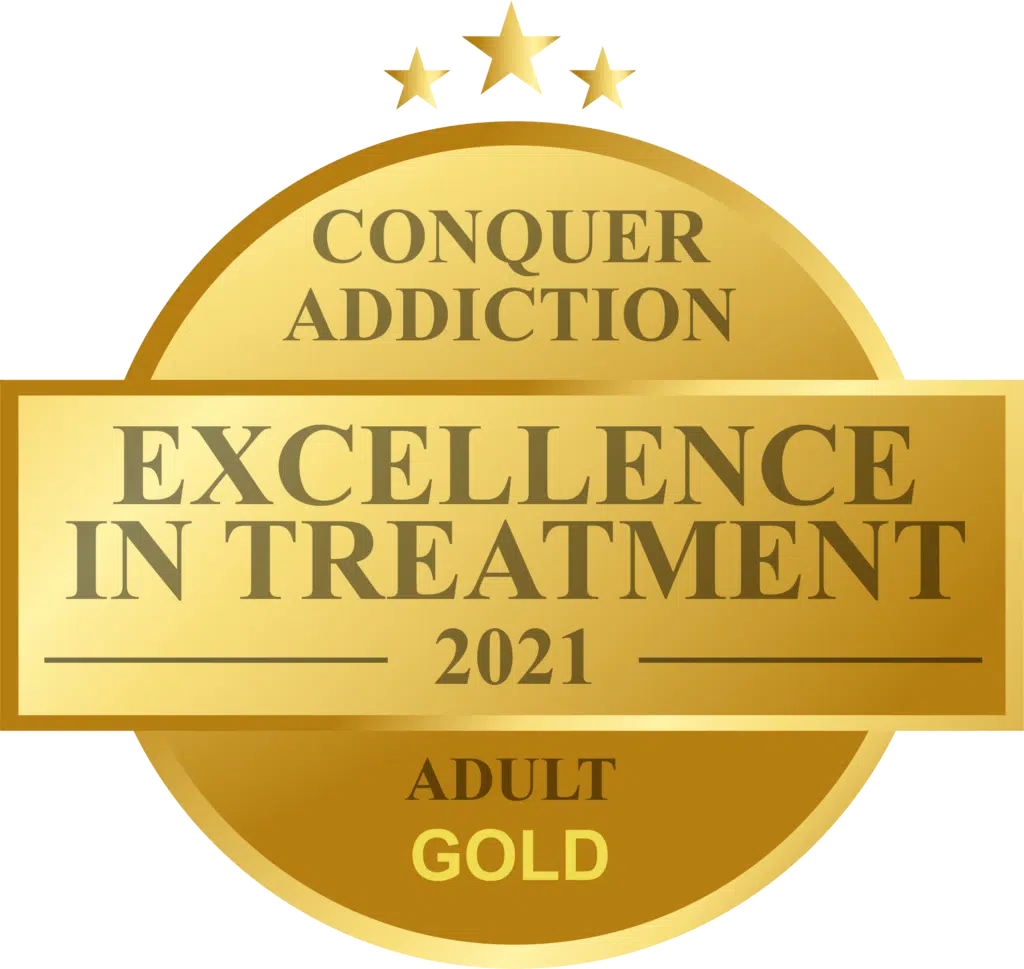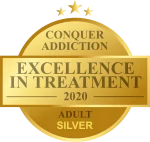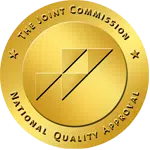© 2024 Aton Center | Privacy Policy | Terms of Use | Accessibility Statement | Grievance process | California Addiction Recovery | DHCS Licenses | Sitemap
Most people have experienced the connection between thoughts, feelings, and physical sensations. Phrases such as “gut-wrenching” and “heartbreak” express how emotions affect the way someone feels physically.
When a person feels nervous, they may also feel dizzy or lightheaded. Their hands may tremble, or their palms become sweaty. And it’s fairly common for someone experiencing intense anger to also have a flushed face, racing heart, shallow breathing, or a tightly clenched jaw.
These examples demonstrate how powerful the connection is between mind and body. And many scientific studies have shown how chronic psychological stress creates harmful imbalances in the brain and nervous system—which, in turn, can negatively impact other parts of the body. Based on these results, it is estimated that 75%-90% of all visits to a doctor’s office are for stress-related illnesses. 1
How the Mind-Body Connection Affects Substance Abuse
Substance abuse—addiction to alcohol or other drugs—is often a maladaptive coping skill for dealing with emotional stress. Because chronic stress and anxiety have both psychological and physical components, treatments that are rooted in a holistic mind-body approach are most likely to be effective.
The mind-body connection is a central aspect of holistic medicine, which aspires to treat the whole person, not just their symptoms. AtoN’s addiction recovery programs are designed to enhance the mind-body connection in service of healing from addiction and achieving overall health and wellness.
For people who are struggling with substance abuse and want to find treatment that involves holistic practices, the sections below provide essential information. What is the mind-body connection? What techniques employ body-mind tactics? Why is the body-mind connection so important for healing addiction? These and other questions are answered fully here.
Get in Touch
Definition of the Mind-Body Connection
The word “mind” can have many different definitions. One common definition of mind is the collection of everchanging thoughts and mental images that are generally considered to be subjective. A person’s thoughts and internal images are subjective because only they have access to them. Under normal circumstances, one person doesn’t have direct access to another person’s thoughts.
The word “body” typically refers to the physiological processes and kinesthetic sensations associated with the physical body. Some of these can be measured objectively—i.e., from the outside—for instance, via x-rays, MRIs, or bloodwork. But the kinesthetic sensations of a person’s body—how it feels directly—are subjective.
Emotions such as fear, anxiety, sadness, anger, shame, disgust, joy, and contentment oftentimes seem to exist at the interface between mind and body. What is named an “emotion” often includes a combination of physical sensations, thoughts, and internal images. This is one example of the mind-body connection.
The Mind and Body Coming Together
The mind-body connection is the way that thoughts, feelings, and physical sensations communicate with and influence one another. The way a person feels—physically and/or emotionally—influences how they think. And thoughts have an impact on the body and emotions. The mind-body connection is a feedback loop between an individual’s body and their mind.
When someone is feeling afraid, their heart rate is likely to increase. And their posture may shift from being upright and open to hunched over and closed—in a gesture of protection. A person feeling pensive—their mind spinning with worrisome thoughts about the past or future—may well have trouble falling asleep at night.
On the other hand, an individual that feels emotionally confident is likely also to feel physically at ease, comfortably relaxed, with a naturally upright posture. Their breathing and heart rate will probably also be balanced and relaxed. And their thoughts will mirror how they feel: positive, inspired, relaxed and creative.
Example of How Mind Affects Body: Biting a Lemon
One way to experience how the mind affects the body is to vividly imagine biting into a juicy-sour wedge of lemon. Chances are good that when a person imagines this, their mouth will begin to fill with saliva.
This demonstrates how the mind—the internal image of biting into a lemon—has an effect on the body—the process of salivation.
Example of How Body Affects Mind: Smiling
But the mind-body connection isn’t just about how the mind affects the body. It’s also about how the body affects the mind.
Smiling is one great way to experience how the body can affect the mind. A simple smile has been shown to dramatically change brain chemistry. And these changes in brain chemistry facilitate changes in a person’s mental-emotional experience. The act of smiling activates neural messaging that enhances health and happiness. 2
The physical act of smiling releases neuropeptides that help to reduce stress. A flood of feel-good neurotransmitters (dopamine, endorphins, and serotonin) elevates a person’s mood, creates a sense of wellbeing, and acts as a natural pain reliever (the body’s own opiates).
Many antidepressant medications influence the levels of serotonin. But with a simple smile, it may be possible to accomplish much the same thing without a pharmaceutical prescription and all its side-effects.
Is There Science Backing the
Mind-Body Connection?
Many traditional medical systems—such as Chinese Medicine and Ayurveda—acknowledge the mind-body connection more fully than does western medicine. Chinese Medicine understands the root-cause of physical disease, in many cases, to be an imbalance of emotional energy. And according to Ayurveda, the physical body is nothing other than a crystallization of the mind.
Western scientific studies of the brain and nervous system highlight a wide variety of mind-body correlations. The brain’s hormones and neurotransmitters are associated with both emotional and physical effects. They can affect blood pressure, heart rate, and sleep patterns—as well as mood. And stressful experiences alter the body’s immune response—for instance, by triggering the fight-flight-freeze response of the sympathetic nervous system. 4
Researchers have also discovered a link between the use of words expressing positive or negative emotion—and a person’s overall health and wellness. 5
Oftentimes, it’s not entirely clear which causes which. It’s a chicken-and-egg question pointing to an intricate feedback loop between mind and body. This relationship between subjective mental experiences and neurological activity is sometimes referred to as a tangled hierarchy. Each influences the other continuously.
Why the Mind-Body Connection is Important
Though the relationship may be a complex one, there’s no denying the power of the connection between the mind and body. And this means that physical and psychological health are intimately related.
Preventing chronic disease and cultivating physical vitality often requires lifestyle changes—for instance, in diet, exercise, and sleep habits. But a person’s capacity to successfully implement such changes depends upon their attitudes, beliefs, and motivations—which are aspects of the mind. So, a person’s mental-emotional state may sabotage their desire to create physical health.
And the converse is also true: psychological wellness may depend at least in part upon facilitating biochemical changes in the brain, resolving chronic physical pain, or unwinding habitual fight-flight-freeze patterns in the sympathetic nervous system.
The Relationship Between Thoughts and Mental Health
Negative thinking patterns—e.g., self-criticism, assuming the worst, or jumping to conclusions—can hamper a person’s ability to relate skillfully to physical or psychological health challenges.
These negative thinking patterns are sometimes referred to collectively as the “inner critic.” The voice of the inner critic is judgmental and demeaning. This negative internal commentary has the habit of pointing out how the person is wrong or bad.
These thought patterns can be difficult to dissolve. And the negative inner voice can have serious physical and psychological health consequences. Mind-body therapies are one of the best ways to begin replacing the inner critic with an inner advocate—with positive, supportive, and uplifting self-talk.
Proven Mind-Body Techniques to Practice
Holistic mind-body therapies are a great resource for healing both the body and the mind. Research has confirmed the usefulness of mind-body approaches such as yoga and meditation for promoting emotional regulation—and for helping people to manage stressful experiences and challenging emotions without resorting to alcohol or other drug use. 6
Mind-body therapies are healing techniques that promote relaxation and encourage mindfulness. These therapies use the body to beneficially affect the mind and vice versa. Some common mind-body therapies that can deeply support the healing process include:
Acupuncture
A technique associated with Chinese Medicine involves inserting hair-thin needles at specific places on the body to support a balanced flow of life-force energy. The NADA protocol of ear acupuncture was developed specifically to support addiction recovery. 7
Massage Therapy
Support for releasing muscular tensions and benefiting from healing touch.
Cognitive Behavioral Therapy (CBT)
A psychological modality that helps an individual identify unproductive or negative thoughts, feelings, and behaviors—and replace them with more positive and beneficial ones.. Offshoots of CBT include dialectical behavior therapy and mindfulness-based cognitive therapy.
Guided Imagery
Taps into the mind-body connection by helping a person imagine things that make them feel relaxed and/or inspired.
Biofeedback
Helps a person learn how to acquire voluntary control over normally automatic bodily functions, such as heart rate.
Meditation
Tools for knowing, transforming, and liberating the mind.
Mindfulness
Helps a person “get out of their head” by attending mindfully to the breath, or to physical sensations, or external sense perception, or emotional energy.
Breathwork
Learning to alleviate stress by gently altering breathing patterns.
Somatic Experiencing
A body-mind therapy especially effective for treating trauma and stress-related disorders such as PTSD.
Progressive muscle relaxation
Tensing and relaxing muscle groups throughout the body, to increase awareness of habitual patterns of tension.
Hypnotherapy
A heightened state of focused attention and relaxation helps a person become more receptive to making positive changes.
Feldenkrais
The slow gentle exercises of a Feldenkrais practice can help expand awareness of physical sensations; explore new ways of moving; and create new circuits in the brain.
Dance Therapy/Music Therapy/Art Therapy
Using artistic expression to support the body-mind healing process.
Qigong and Tai-Chi
Traditional Chinese body-mind practices involving gentle movements, attention to breath, and the cultivation of life-force energy.
Restorative/Therapeutic Yoga
The Kaiut Method is one form of restorative yoga designed specifically to deeply nourish the nervous system, and resolve chronic pain by unwinding restrictions in the joints.
EMDR
A type of treatment that utilizes the mind-body connection to heal the subconscious mind.
Chiropractic
A therapy that involves manipulating the spine (and other parts of the body’s boney structure) to restore spinal alignment, improve range of motion, and relieve pain.
Healing Touch
An energy therapy that uses gentle hand techniques to help re-pattern a person’s subtle energy field to support body-mind healing.
CBT Combined with Other Holistic Practices
Cognitive behavioral therapy (CBT) shows how a person’s thoughts and beliefs influence their behaviors. Changing habitual thought patterns from negative and harmful to positive and helpful, can effectively support behavioral change.
Combining CBT with other holistic mind-body approaches—such as yoga, mindfulness, meditation, or breathwork—can be an effective approach for treating mental health and substance use disorders. These activities help calm the nervous system, which then calms the mind, setting the stage for optimal effectiveness of CBT.
Is the Mind-Body Connection Important During Recovery?
Because the mind influences the body, and the body influences the mind, the mind-body connection is of central importance to mental health and addiction recovery. A person’s physical and psychological health are intimately connected to each other.
Daily practice of holistic health modalities (such as those listed above) is a great way to cultivate the mind-body connection. And these practices can play a vital role in recovery from alcohol or other drug addiction.
The mind-body connection plays an essential role in the treatment of mental health and substance use disorders. From sleep and nutrition; to exercise and movement; to yoga and meditation—the mind-body connection can nourish a person’s overall health and well-being. Holistic practices are valuable in:
Relapse prevention
Managing the stress response
Nourishing health and wellbeing
Improving the overall quality of life
The Mind-Body Connection and Addiction
The mind and body are not essentially separate from one another—but rather are interrelated in countless ways. For instance, ingesting alcohol or drugs—a physical activity—influences mental-emotional processes. And certain mental-emotional conditions—such as anxiety or depression—can predispose a person to addictive behavior.
It’s for this reason that treatment involving both mental and physical health is ideal for recovery from mental illness and substance use disorders.
The mind-body connection is also important for treating chronic pain. When a person experiences chronic pain, they are at risk of developing a co-occurring mental health or substance use disorder—another example of how body and mind influence one another.
The bottom line is that holistic mind-body therapies are crucial for effective substance abuse treatment.
Improve Your Mind-Body Connection with AToN Center
Effective treatment of addiction and mental illness involves all aspects of health and wellness—body, mind, and spirit. And holistic therapies can enhance the mind-body connection during mental health and addiction recovery.
AToN Center is a residential-detox facility located in San Diego, California, but serves people from across the country. AToN Center team specializes in luxury treatment and offers a wide range of holistic healing modalities combined with conventional therapy.
Treatment options for substance use disorder include:
Medically assisted detox
Residential treatment
Individual and group therapy
12-step and 12-step alternative support groups
Aftercare
AToN Center is located in beautiful tropical surroundings, highlighted by waterfalls and lush gardens. Onsite chefs prepare nutritious and delicious meals. Each resident’s home is equipped with a jacuzzi and pool. Spacious, comfortable rooms provide privacy, relaxation, and quietude.
AToN Centers's Holistic Mind-Body Healing Programs
Individuals who are struggling with addiction need a full stop of the addictive behavior—and support for embarking in a new direction. Holistic approaches combined with conventional therapy are the most effective way to support this kind of healing and transformation.
The mission of AToN Center is to help people recovering from addiction find and enjoy this new direction—a healthier and more satisfying way of living. This aspiration for our clients is built right into AToN’s name: an acronym created from the phrase “aid to navigation.” And the heart of this therapeutic process is holistic healing.
Residents at AToN Center enjoy unlimited group holistic activities such as sound bowl healing, breathwork, yoga, meditation, hiking, and painting class. In addition, each resident can schedule three individual holistic treatment sessions per week.
The powerful holistic healing modalities offered at AToN Center include:
Breathing and stress reduction
Yoga and Meditation
Massage Therapy
Acupuncture
Hypnotherapy
Physical Therapy
Personal Training
Watsu
The AToN team is devoted to helping each resident find their direction along a path of healing and recovery. Skilled staff and therapists provide effective support, loving encouragement, and a heart of compassion to guide the way.
To learn more about AToN’s addiction recovery program, please feel free to contact us.
References & Resources
- (July 9, 2020). The Effects of Stress and Anxiousness on Your Health. NeurosScience. https://www.neuroscienceinc.com/news/2020/the-effects-of-stress-and-anxiousness-on-your-health
- Selig, Meg (May 25, 2016). The 9 Superpowers of Your Smile. Psychology Today. https://www.psychologytoday.com/us/blog/changepower/201605/the-9-superpowers-your-smile
- Riggio, Ronald (June 25, 2012). There’s Magic in Your Smile: How Smiling Affects Your Brain. Psychology Today. https://www.psychologytoday.com/us/blog/cutting-edge-leadership/201206/there-s-magic-in-your-smile
- Segerstrom SC, Miller GE. Psychological stress and the human immune system: a meta-analytic study of 30 years of inquiry. Psychol Bull. 2004 Jul;130(4):601-30. https://www.ncbi.nlm.nih.gov/pmc/articles/PMC1361287/
- (September 10, 2020). Emotion Vocabulary Reflects State of Well-Being. Neuroscience News. https://neurosciencenews.com/emotional-vocabulary-wellbeing-17001/
- Park CL, Russell BS, Fendrich M. Mind-Body Approaches to Prevention and Intervention for Alcohol and Other Drug Use/Abuse in Young Adults. Medicines (Basel). 2018 Jun 27;5(3):64. https://www.ncbi.nlm.nih.gov/pmc/articles/PMC6164017/
- Carter, Kenneth (2014). NADA Protocol: Integrative Acupuncture in Addictions. Journal of Addictions Nursing & Volume 25 & Number 4, 182-187.
https://alliedhealth.ceconnection.com/files/NADAProtocolIntegrativeAcupunctureinAddictions-1419263411853.pdf
Clinically reviewed for accuracy by: Taylor Avery, MFT











